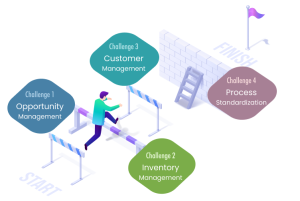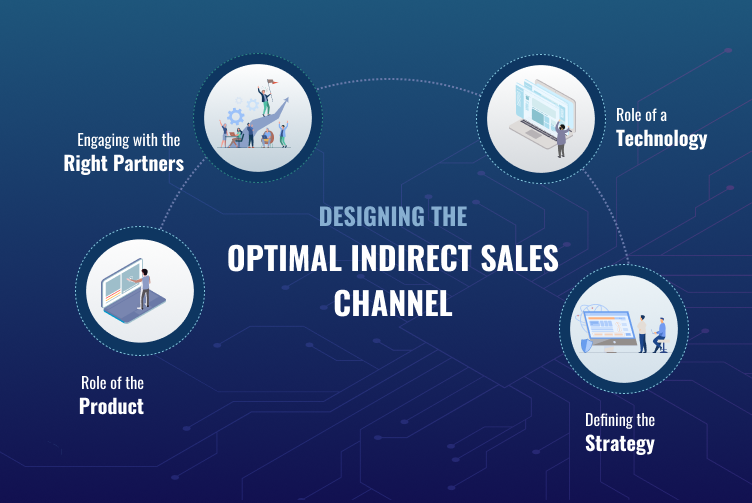Most brands primarily rely on distributors to sell their products to consumers. Hence, it’s crucial to recognise their efforts and reward them.
Sales compensation is one way to encourage the folks who bring in the revenues at distributors to excel, meet the sales numbers, or make referrals to consumers. It helps the brands to build a trustworthy, long-term relationship with the distributors.
Sales literature suggests the same too. For instance, researchers from Harvard Business School found that bonuses directly contribute to productivity enhancement. They further revealed that strategic revisions in compensation schemes bolstered sales by 50%, which wasn’t the case for investments directly pertaining to advertisement channels.
On that note, here are some of the top ways to reward distributors for their excellence.
- Money back: It’s the easiest way to compensate the distributors for their sales. They are compensated monetarily based on the sales they make.
- All-expenses holidays: The brand can pay for an all-expense holiday if the distributor meets the goals.
- Overhead expense management: Some brands pay distributors in advance to help them manage their overhead expenses.
- Loyalty programs: Brands can start a loyalty program that would offer loyalty points, which they can accumulate and redeem to avail of different rewards.
The benefits of robust sales compensation strategies are endless. However, brands often find it hard to implement or manage them due to their complexities.
Let’s look at a few challenges they face in implementing it.
Complexities In Sales Compensations
Complexities in Incentive Programs
Brands need to ensure that distributors across different geographies understand the incentive programs well. It should be able to drive the desired behaviour among the distributors.
Complex incentive programs can impact the distributors’ performance. Sometimes a well-designed sales compensation strategy could fail if the distributors find it complex. Multiple caps and quotas complicate the compensation structure and delay pay-outs.
Then there are inconsistencies in the plans as brands add more products, variants, or geographies to the existing strategy. It could also lead to errors in pay-out calculations. The more complex the program, the less likely the distributors will participate or perform well.
All considered, the distributors should understand how the program can help them drive sales and improve their profitability. A simple compensation plan will make execution easier and encourage the distributors to optimise their performance.
Lack of Communication
Communication is the key to explaining the sales compensation structure to the distributors. There should be no scope for misunderstanding or misinterpretation. Everybody should be aware of how the incentive programs work, how the performance will be measured, and the desired outcomes that the brand expects them to achieve.
Without a clear understanding, the distributors will not be motivated enough to achieve the goals. If there are frequent changes in the structure, brands must immediately communicate that to the distributors. There must be no confusion or ambiguity in the process, i.e., every term should be explained.
For example, brands often use the terms bonus and incentives interchangeably. The distributors must understand the differences as the pay-outs and other performance metrics could vary for both.
Altogether, it’s set in stone that transparent communication will go a long way in building trust between distributors and brands.
Outdated Compensation Plans
Brands often don’t revisit their existing compensation plans because they work well. But in a fast-paced business landscape, brands cannot recycle the same compensation every year.
Sometimes distributors make sales in challenging situations such as technical problems or something as massive as a pandemic. Hence, brands must recognise their efforts and restructure the compensation plans to motivate distributors.
Another reason for modifying the compensation plans is to revitalise the distributors and motivate further to boost sales. If the brand keeps recycling the compensation plans, the distributors will hit a performance plateau because there will be no motivation to improve their performance.
Brands can make changes to their plans by tracking and measuring the performance of distributors against the set KPIs. It will help them make changes based on the recent data.
Dependency on Manual Processes
Most brands use manual processes to monitor the distributors’ performance. But these practices are error-prone and time-consuming. It could also lead to distributors raising false claims or budget mismanagement.
Besides, brands often rely on excel sheets to calculate or track the pay-outs. So, it’s hard to make changes to the compensation plans or adjust the forecasting.
Not to forget that brands could spend more than a week processing the pay-outs. This demotivates the distributors and impacts their sales performance.
The best way to overcome this issue is by automating the processes and monitoring the performance in real-time to adjust the plans and forecasts.
Conclusion
As competition gets stiff, brands cannot overlook that distributors are the crucial connection between them and the consumers. Accurate and timely compensations are vital to building a solid relationship with the distributor.
Technology can help organisations overcome the complexities and ensure that the distributors are well compensated. It can further help track sales activities in real time, set up KPIs, and manage multiple incentive programs. However, it’s essential to choose the right tool to manage the vast incentive program.
iSteer incentive is one such tool that enables brands to build an incentive management program to motivate distributors and drive their behaviour towards increasing sales volume.
The sales team can track the distributors’ performance and earnings in real-time to ensure that the good performers are adequately compensated.
It brings transparency to the system and enables the team to better control the commission payments and earnings.
To know more about the tool, contact us.




